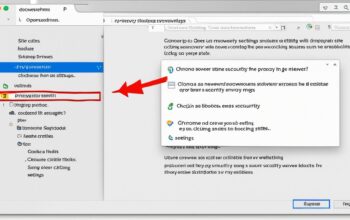Part-time jobs are a popular option for individuals who want or need to work fewer hours and have more flexibility in their schedules. However, there is often confusion about how many hours qualify as part-time employment. The Bureau of Labor Statistics indicates that the average number of part-time hours per week is 35, but there are no specific guidelines set by the Fair Labor Standards Act (FLSA). Employers have the flexibility to define their own full-time and part-time work hours, as long as they adhere to any state or federal requirements. It is important for employers to clearly communicate the expectations and benefits associated with part-time employment to their employees.
Key Takeaways:
- Part-time employment allows individuals to work fewer hours and have more flexibility in their schedules.
- The average number of part-time hours per week is 35, according to the Bureau of Labor Statistics.
- The Fair Labor Standards Act (FLSA) does not provide specific guidelines for distinguishing between part-time and full-time employees.
- Employers have the flexibility to define their own full-time and part-time work hours, as long as they comply with state and federal requirements.
- Clear communication between employers and employees regarding part-time expectations and benefits is essential.
What is a Part-Time Job?
A part-time job is a type of employment that offers individuals the opportunity to work fewer hours and have fewer responsibilities compared to full-time employees. It is a flexible work arrangement that allows for a better work-life balance and can accommodate various personal priorities. Part-time jobs are sought after by individuals who may have other commitments such as caring for family members, pursuing education, or engaging in hobbies.
The number of hours worked in a part-time job can vary depending on the employer and industry. While full-time employees typically work 40 hours per week, part-time employees may work less, such as 25 hours per week. Some employers offer flexible scheduling options, enabling part-time employees to alternate shifts or create their own schedules to fit their specific needs.
Part-time jobs can be found in a wide range of industries and sectors. Examples include retail, hospitality, tutoring, banking, writing/editing, graphic design, administrative support, construction, and customer service. The availability of part-time positions depends on the job market and the specific needs of employers.
In a part-time role, employees generally have fewer responsibilities compared to their full-time counterparts. However, the exact responsibilities can vary depending on the nature of the job and the employer’s requirements. Part-time employees are expected to fulfill their assigned tasks and contribute to the overall success of the organization within the designated work hours.
Part-Time Work Schedule
Part-time work schedules can differ depending on the employer’s policies and the needs of the business. While some part-time employees have fixed schedules with consistent hours, others may have variable schedules or the ability to choose their own working hours within certain parameters.
Employers offering part-time positions with fixed schedules may require employees to work specific days and times each week. This can provide stability and predictability for both the employee and the employer.
On the other hand, employers that provide more flexibility in scheduling allow part-time employees to determine their own hours while meeting the organization’s operational needs. This flexibility can be especially beneficial for individuals who have other commitments, such as caregiving responsibilities or educational pursuits.
Overall, part-time jobs offer individuals the opportunity to work fewer hours while still earning income and gaining valuable work experience. They provide a means to balance personal obligations and professional goals, making them a desirable option for many job seekers.
How Many Hours a Week is Part-Time?
Understanding the number of hours that constitute part-time employment can be helpful for both job seekers and employers. While the Bureau of Labor Statistics indicates that the average number of part-time hours per week is 35, it is essential to note that there are no specific guidelines set by the Fair Labor Standards Act (FLSA) on part-time work hours. The FLSA leaves it up to employers to define their own full-time and part-time schedules, as long as they comply with any state or federal requirements.
To provide further clarity, the Internal Revenue Service (IRS) defines part-time employees as those who work less than 30 hours per week or less than 130 hours per month. This definition was established for the Affordable Care Act (ACA), which requires applicable large employers (ALEs) to provide health coverage to full-time employees. However, employers who are not subject to the ACA can create their own definitions of part-time work.
For organizations, it is crucial to document the differences between full-time and part-time in company policies, including the expected hours and eligibility for benefits. Clear communication of these expectations will help employees understand their work schedules and the corresponding benefits they are entitled to.
| Industry | Average Part-Time Hours per Week |
|---|---|
| Retail | 20-30 |
| Hospitality | 25-35 |
| Healthcare | 20-30 |
| Education | 15-25 |
| Administrative | 20-30 |
Factors Influencing Part-Time Hours
The number of hours worked in a part-time job can vary depending on several factors, including the industry, employer’s needs, and employee availability. Different industries have different expectations for part-time hours. For example, retail and hospitality sectors often offer part-time positions with 20-30 hours per week, while healthcare and education may provide 15-25 hours per week for part-time employees.
Flexible scheduling and variable shifts are common in part-time work, allowing individuals to balance their personal commitments while still contributing to the workforce. Some employers may have set schedules for part-time employees, while others give workers the ability to choose their hours based on availability and business needs.
Overall, part-time work offers individuals the opportunity for a better work-life balance through fewer working hours. It also allows them to pursue other interests, undergo education or training, or fulfill family responsibilities.
Advantages and Disadvantages of Part-Time Employees
Part-time employees offer several advantages for employers. One of the main benefits is cost reduction. Part-time workers typically have lower wages and fewer benefits compared to full-time employees, which can help companies save on payroll expenses. Additionally, part-time employees provide flexibility in staffing. They allow employers to meet fluctuating demand and handle seasonal peaks in business activity. By having part-time staff, companies can ensure adequate coverage without the need to hire full-time employees.
Another advantage of part-time work is the potential to alleviate workload and stress on full-time employees. For businesses that experience busy periods, part-time employees can take on some of the tasks and responsibilities, allowing full-time employees to focus on their core duties. Moreover, part-time positions can be attractive to individuals seeking flexibility, such as students, parents, or individuals with other part-time commitments. This diverse pool of talent can bring fresh perspectives and skills to the workplace.
Despite the advantages, there are also challenges associated with part-time employment. One of the key drawbacks is that part-time employees may not accomplish as much within the same time frame as full-time employees. This is due to their reduced work hours and responsibilities. Employers must carefully manage expectations and ensure adequate support and resources are provided to part-time workers to maximize their productivity.
Another challenge is the potential difficulty for part-time employees to form strong relationships with colleagues and fully integrate into the workplace culture. Since they work fewer hours, they may have limited interaction with other team members, potentially leading to reduced collaboration and camaraderie. Employers should strive to create an inclusive environment where part-time employees feel connected and valued.

While there are advantages and disadvantages to employing part-time workers, it is important for employers to evaluate their needs and objectives before deciding on the best staffing strategy. By carefully considering the advantages and challenges associated with part-time employment, businesses can make informed decisions that align with their goals and support overall success.
Overtime and Part-Time Workers
Part-time employees generally do not work enough hours to qualify for overtime pay under the Fair Labor Standards Act (FLSA). However, nonexempt part-time employees, just like their full-time counterparts, are entitled to premium overtime pay if they work more than 40 hours in a workweek. The rate of overtime pay is one and a half times their regular pay rate.
It is important for employers to be aware of any state-specific overtime regulations, as some states have their own rules that may differ from the FLSA guidelines. For example, some states require premium pay after a certain number of hours worked in a day. Understanding and adhering to these regulations ensures that part-time employees receive the proper compensation for any overtime hours worked.
Overtime Pay Calculation Example
Let’s consider an example to illustrate how overtime pay for part-time employees is calculated:
| Scenario | Regular Pay Rate | Overtime Hours | Overtime Pay |
|---|---|---|---|
| Part-time Employee | $10 per hour | 45 hours | $15 per hour ($10 x 1.5) |
In this scenario, the part-time employee worked 45 hours in a workweek, exceeding the 40-hour threshold. The regular pay rate for the employee is $10 per hour, but during the 5 hours of overtime, they are entitled to receive $15 per hour. This premium overtime pay compensates the employee for the additional hours worked beyond the standard workweek.
It is important for employers to accurately track and record the hours worked by part-time employees to ensure adherence to overtime regulations. This can involve the use of time-tracking systems, digital tools, or other methods to accurately record and calculate overtime pay.
By understanding and complying with FLSA guidelines for overtime and any applicable state regulations, employers can ensure fair compensation for their part-time workers and maintain compliance with labor laws.
What Jobs are Best Suited for Part-Time Employees?
Part-time employment offers a wide range of job opportunities across various industries. While retail and hospitality are commonly associated with part-time work due to their need for flexible staffing, part-time positions can be found in almost any sector. Here are some examples of part-time jobs in different fields:
Retail and Hospitality:
- Retail Sales Associate
- Restaurant Server
- Hotel Front Desk Agent
- Customer Service Representative
- Event Staff
Education and Tutoring:
- Tutor
- Teaching Assistant
- Test Prep Instructor
- Language Instructor
Administrative and Office Support:
- Administrative Assistant
- Data Entry Clerk
- Virtual Assistant
- Receptionist
Writing and Editing:
- Content Writer
- Copyeditor
- Proofreader
- Freelance Writer
Graphic Design and Creative:
- Graphic Designer
- Illustrator
- Photographer
- Web Designer
Construction and Maintenance:
- Laborer
- Handyman
- Landscaper
- Painter
These are just a few examples of the part-time job opportunities available. The availability of part-time positions may vary depending on the job market and the specific needs of employers. Part-time work can provide individuals with valuable experience, the opportunity to explore different career paths, and the ability to maintain a better work-life balance.
Frequently Asked Questions about Part-Time Employment
Many individuals choose to work part-time for various reasons. Some may opt for part-time work to supplement their income or to better manage other responsibilities such as caring for family members or pursuing personal interests. The decision to transition from part-time to full-time employment depends on the specific policies of the employer, as well as the performance and availability of the individual.
Part-time employees generally have the same workplace rights as their full-time counterparts. This means they are entitled to benefits such as overtime pay, workers’ compensation, and family and medical leave, as long as they meet the necessary criteria. It is important to note that salary expectations for part-time work can vary depending on the industry and location, but nonexempt part-time employees are entitled to at least the applicable minimum wage.
Overtime regulations for part-time employees mirror those of full-time employees. If a part-time employee works more than 40 hours in a workweek, they are entitled to premium overtime pay. However, it is essential for employers to adhere to state and federal overtime regulations. The availability of vacation, sick, or holiday pay for part-time workers may vary depending on state laws and employer policies.
FAQ
How many hours is considered part-time employment?
There is no specific guideline set by the Fair Labor Standards Act (FLSA) for part-time employment. Employers have the flexibility to define their own full-time and part-time work hours, as long as they adhere to any state or federal requirements.
What is a part-time job?
A part-time job is a type of employment in which an individual works fewer hours and has fewer responsibilities than a full-time employee. Part-time employees are sought after by individuals who have other priorities in their lives, such as caring for family members, pursuing education, or engaging in hobbies.
How many hours a week is considered part-time?
The average number of part-time hours per week is 35, according to the Bureau of Labor Statistics. However, the distinction between part-time and full-time work hours is determined by employers, as no specific guidelines are set by the FLSA.
What are the advantages and disadvantages of hiring part-time employees?
Advantages of hiring part-time employees include cost reduction, flexibility in staffing, and workload alleviation for full-time employees. However, challenges may include potentially reduced productivity and integration into the workplace culture.
Do part-time employees qualify for overtime pay?
Part-time employees generally do not work enough hours to qualify for overtime pay under the FLSA. However, nonexempt part-time employees are entitled to premium overtime pay if they work more than 40 hours in a workweek.
What types of jobs are best suited for part-time employees?
Part-time job opportunities can be found in almost any sector. Some examples include tutors, bank tellers, writers/editors, graphic designers, administrative assistants, construction workers, and customer service representatives.
What are some frequently asked questions about part-time employment?
Common questions include reasons for working part-time, the transition from part-time to full-time employment, workplace rights for part-time employees, salary expectations, overtime regulations, and the availability of vacation and sick pay for part-time workers.







